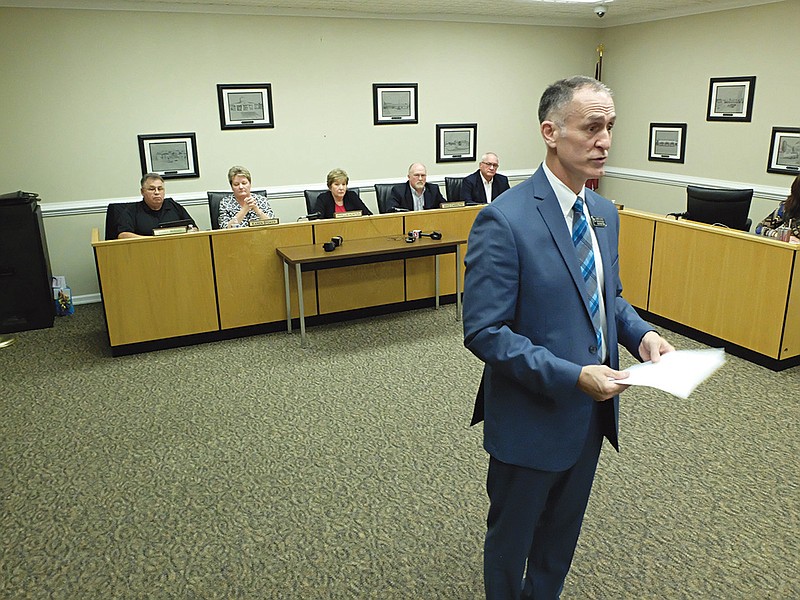The Walker County School Board is working to finalize its projected budget for the 2021 fiscal year while accounting for impacts from the ongoing coronavirus pandemic.
Following several meetings, the board is still working to solidify its numbers after being informed of a 10% cut in funds usually allocated from the state, which would drop the year's projected revenues by about $5.1 million, district Superintendent Damon Raines said in a board meeting on July 8.
At that meeting, Raines projected 2021FY revenues of approximately $85.6 million alongside $88.6 million in expenditures, leaving a roughly $2.95 million deficit. But as planning continues, those numbers are likely to shift.
"If they go through the numbers and they decide that there are some other areas that we should cut out of the budget or decrease, those numbers, that bottom line might change," Rachel Elliot, the district's director of financial services, said in a follow-up interview. "Those are very tentative numbers."
Another planning session was scheduled for July 14, at which point the board expected to present its first public copy of the proposed budget.
Following a public input session July 20, the board is scheduled to take its first and only vote on the budget that night.
The district is currently looking at ways to lessen expenses and work on balancing the budget before finalizing projections.
"Anything that you think of that is potentially a cost saving for something that will help create a healthy budget, we want to point that out as well, and we'll continue working tirelessly," Raines told the board July 8.
The 2020FY budget projected revenues around $89.8 million along with $94.6 million in expenditures, which would have left the district with a deficit of about $4.7 million for the year that ends July 31, 2020, and greatly compounded the district's financial stress.
But, according to Raines, a close watch on expenditures, decreased operational costs after schools closed in the spring and higher than projected revenues lowered costs by more than $2 million.
"We watched every expenditure," he said. "It means that we were making sure that anything that came before us, there was a councilor talking about 'Is that a want or is that a need?' 'Is it something we can fund from another source?' 'How can we do this later?'"
Another boost to income came from the CARES Act, federal funding meant to mitigate the effects of the coronavirus pandemic. Raines said during a preliminary budget meeting held on June 25 that the district received about $2.2 million.
Those funds were allocated to a variety of needs including covering utility costs when schools moved online in March, paying custodians and purchasing more sanitation supplies. Some funds given to the district were also required to be distributed to a local private school.
In addition to nailing down its financial outlook, the district is continuing to shape plans for how the new school year will look in regard to considerations for COVID-19.
According to Raines, over 80% of families indicated through surveys that they would prefer a traditional school day. However, amid the area's continuously increasing number of COVID-19 cases, the district is also looking at ways to provide online, remote services.
"We do have a virtual option that we're working on right now," Raines said. "I think it will be something that our folks that don't feel that comfort level [to return in person] will be OK with. It will look much different from what we did the last nine weeks [of last school year]. There will be a lot more accountability associated. I think we've got a good plan."
The board recently approved the purchase of 2,400 Chromebooks funded through eSPLOST at the cost of $524,088 in an effort to provide more students with personal learning devices.
Contact Tierra Hayes at tierrathejournalist@gmail.com.
